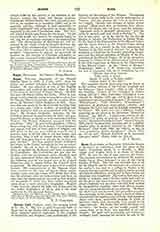

Rorate Coeli (Vulgate, text), the opening words of Is., xlv, 8. The text is used frequently both at Mass and in the Divine Office during Advent, as it gives exquisite poetical expression to the longings of Patriarchs and Prophets, and symbolically of the Church, for the coming of the Messias. Throughout Advent it occurs daily as the versicle and response at Vespers. For this purpose the verse is divided into the versicle, “Rorate coeli desuper et nubes pluant justum” (Drop down dew, ye heavens, from above, and let the clouds rain the just), and the response: “Aperiatur terra et germinet salvatorem” (Let the earth be opened and send forth a Savior”). The text is also used: (a) as the Introit for the Fourth Sunday in Advent, for Wednesday in Ember Week, for the feast of the Expectation of the Blessed Virgin, and for votive Masses of the Blessed Virgin during Advent; (b) as a versicle in the first responsory of Tuesday in the first week of Advent; (c) as the first antiphon at Lauds for the Tuesday preceding Christmas and the second antiphon at Matins of the Expectation of the Blessed Virgin; (d) in the second responsory for Friday of the third week of Advent and in the fifth responsory in Matins of the Expectation of the Blessed Virgin. In the “Book of Hymns” (Edinburgh, 1910), p. 4, W. Rooke-Ley translates the text in connection with the O Antiphons (q.v.):
“Mystic dew from heaven
Unto earth is given:
Break, O earth, a Savior yield
Fairest flower of the field”.
The exquisite Introit plainsong may be found in in the various editions of the Vatican Graduale and the Solesmes “Liber Usualis”, 1908, p. 125. Under the heading, “Prayer of the Churches of France during Advent“, Dom Gueranger (Liturgical Year, Advent tr., Dublin, 1870, pp. 155-6) gives it as an antiphon to each of a series of prayers (“Ne irascaris” “Peccavimus”, “Vide Domine”, “Consolamini”) expressive of penitence, expectation, comfort, and furnishes the Latin text and an English rendering of the Prayer. The Latin text and a different English rendering are also given in the Baltimore “Manual of Prayers” (pp. 603-4). A plainsong setting of the “Prayer“, or series of prayers, is given in the Solesmes “Manual of Gregorian Chant‘ (Rome-Tournai, 1903, 313-5) in plainsong notation, and in a slightly simpler form in modern notation in the “Roman Hymnal” (New York, 1884, pp. 140-3), as also in “Les principaux chants liturgiques” (Paris, 1875, pp. 111-2) and “Recueil d’anciens et de nouveaux cantiques notes” (Paris, 1886, pp. 218-9).
H. T. HENRY

